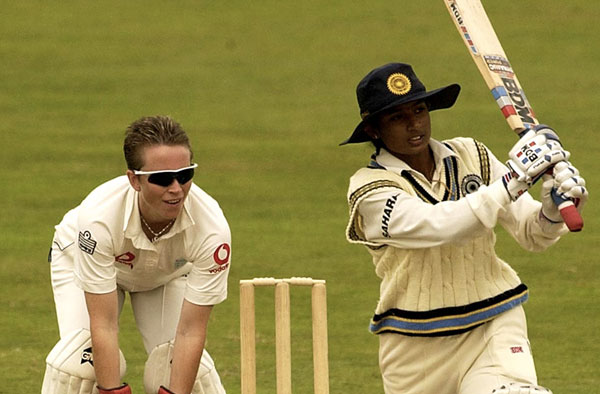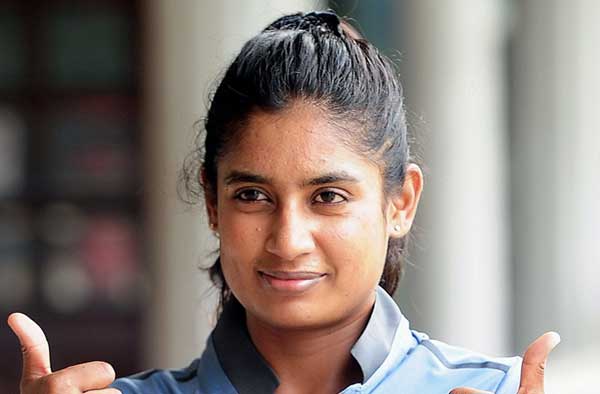On Saturday, at a virtual Ladies Study Group session, Mithali Raj shared her mental toughness tips with two young girls who play cricket and idolize her. She spoke of the quintessential switch-on, switch-off mantra. There is seldom any doubt that consistency is synonymous with Mithali over the last two decades.
The session ‘Leading Team India’ was moderated by cricket anchor, commentator, and broadcaster Gautam Bhimani. During the session, the highest run-getter in women’s cricket shares her inspiring journey.

The 38-year old legend says, “Life goes on no matter what happens. If it is good, you enjoy and move on and if it is bad, you learn a lesson and move on, but you have to move on”.
She adds, “I have always believed, irrespective of the format of cricket I play, it didn’t matter to me as long as I was getting runs. That is how I was brought up by my first coach, late Mr Sampath Kumar. Playing international cricket doesn’t only mean that you have the responsibility to score runs yourself, but you are the hope of millions and billions of people. When you are playing at that level, representing your national team and country, I think nothing less than 100 is what is expected of a player, in terms of commitment. I have always worked to make sure that I am fit and I am not a liability to any team that I am representing so that when I get on to the field, I am able to play whatever role is given to me. Even though I am not a fitness freak, I make sure that I am training every day and get (up to date) with the current standards of women’s cricket.”
What made her choose cricket as a career back those days when women’s cricket hardly garnered any attention, is the question that comes up often.
Raj says, “It wasn’t my decision to become a cricketer. It was my dad’s decision to pursue this sport as a profession back then when there was nothing in women’s cricket. Until I played a senior level in 1995, I didn’t know that we have legends like Shantha (Rangaswamy), Diana (Edulji), Sandhya Agarwal…. I did ask my dad to understand from which headspace he took the decision. There was absolutely no money. A lot of the girls pursued it only for the passion and love for the game. In terms of facility, there was none. We have played in parks and traveled in unreserved (compartments). Once in two years, you would get one international series and we had to run from pillar to post for sponsors.”
On this special day of Indian legend Mithali Raj celebrating her 38th birthday, we bring to you, 38 amazing facts from her journey 😃❤️#HappyBirthdayMithaliRaj #MithaliRaj #Thread pic.twitter.com/EQZhd0oPav
— Female Cricket (@imfemalecricket) December 3, 2020
At the home front, she states, “We had a lot of issues. My grandparents didn’t want me to get into sports, leave alone cricket. For them, it was the first time. To continue to support me in this career, my parents had to go through a lot of sacrifices. They have shielded me from a lot of negativity. I didn’t have to face sexism… but it was a very difficult decision. If I were in my parents’ shoes, I probably wouldn’t have taken that decision. My father played for the Air Force and my brother till his school level. He wanted to see my brother do well in the sport, which he couldn’t, and I started doing well. For me, the motivation was to make my dad happy… even today, his validation is important.”
Talking about the transition of cricket being considered only gentlemen’s game to gaining recognition as a women’s sport as well, the Indian women’s ODI captain avers, “It was a male-dominated sport and I was coached by a male coach and I have played with the boys and I still train with the boys. Now, I don’t think the round-table discussions are limited to men’s cricket. People do talk about women’s cricket and I am grateful that I have seen the evolution of women’s cricket from that era to today’s times and been a part of the journey. It started (the transition), when we came under BCCI. The biggest change initially was that we could go to NCA (National Cricket Academy) where we train with the experts. Your awareness about your own game improves drastically and that reflects in your performance. Then we started having regular international series… a good three-four series in a year. Then the contracted players… that is the biggest change… where the board is taking care of the girls. I know of girls who come from the interiors of the country where the family depends on them for the finances. Being a contracted player really helps because you can still play cricket and look after your family. I think that is why a lot of girls are continuing after certain years. In the last three-four years, the way women’s cricket has burst into our country with the sort of branding it has on its own, I think now the parents are lenient and they don’t push them to settle down or change their profession to earn money. It looks lucrative now.”
Raj has had a wonderful career spanning over 20 years. She made her debut for India at the age of 16 and what a game she had. She scored a century against Ireland and still holds the record of being the youngest woman to score an ODI century on debut.

She reminisces, “The only thing I remember was the sort of pressure that I had on my shoulders. I remember the manager was also, like me, from Hyderabad. She told me (Mohammad) Azharuddin (who hails from Hyderabad) had scored three 100s in a row (in his first three Tests) and I should also score. When I scored the 100, I was satisfied that people who had expectations were happy. I was quite young to understand the entire platform that was given to me because back then nobody knew that the Indian team was touring England or this young girl made 100 on debut. If I would have done it in the current times, the impact would have been far better… then we didn’t have social media or the BCCI. It was good to see my dad happy and the people who encouraged me in the first few years.”
When you play cricket at the highest level, along with your talent, what is important is your temper.
Raj discusses a few tricks. “I do understand the fact that when you are playing on the ground, there are so many things that run in your mind that you just want to focus on your next move and also not get the confidence of the players and the entire team down. So, I restrict myself from an outburst. In the team meetings, I rip them apart. I remember the Australia game in the 2017 World Cup where we lost in the league game, after which I had a bit of a talk with the girls. But it is not something I often do because I do have a lot of patience…. During the one-day World Cup that happened in 2013 in India, it was the first time under BCCI that we were hosting a big event and I remember Star Sports following the game against West Indies. Niranjana (Nagarajan) got hit two sixers back to back by (Deandra) Dottin. I had never seen such shots in women’s cricket before. I was on the ground and I had this expression on my face. She (Niranjana) said ‘I am playing on your side and you are smiling!’ This was captured on television. At the end of the day when I spoke to my dad, he asked me why I was smiling. He took it to a different tangent. It was a spur-of-the-moment reaction and I enjoyed that shot and she (Niranjana) knew that I hadn’t meant in a negative way. The girls know that there are times when I laugh on the field, even though the situation doesn’t demand it, but it is also one way of saying that things are still under control,” she says.

Mithali is the only Indian to score a double century in women’s Test cricket. Remembering that innings, she elucidates, “We were coming from a very bad One Day series. The first Test was washed out. We were watching another Test where England was playing another team and one of the players scored a double 100. I shared how it would feel to score a double 100 and how many hours you would have focused the temperament. And, how the boys jump in the air… I wanted to feel it once. We were playing the Test with four batters. I didn’t expect to score a double hundred. For me, the first thing was to score a 50. When I scored 100, I felt nice, but the job was still not done. When Jhulan (Goswami) joined me, I was almost tired. Imagine playing with a 1.5kg bat for 10 hours?! When I was on 205, the manager sent a word through the 12th man that I needed five runs to break the record. That’s how I scored. I don’t even have a recording of the innings. I came back in AP Express from Delhi to Hyderabad. I was telling my friend there are so many people, maybe a minister was arriving. Later I realised they were there for me! That was the first time my mother had come to receive me. I was not used to so many people receiving me. My dad would drop me and pick me up. And, he was lost in the crowd! People had started to know women’s cricket.”

Mithali has created a strong legacy and is undoubtedly one of the best ambassadors of women’s cricket in the world. Though she is inching towards the business end of her career, what she has done for the Indian women’s cricket is she has inspired many young girls to take up cricket as a career. There are many next-generation cricketers who are finding their ground. Mithali says, “There is a lot of generation gap (in the team). I am into the fourth generation from when I started playing. A lot of the girls were not born when I made my debut. I walk in and they will go quiet (laughs).”

Loves all things female cricket